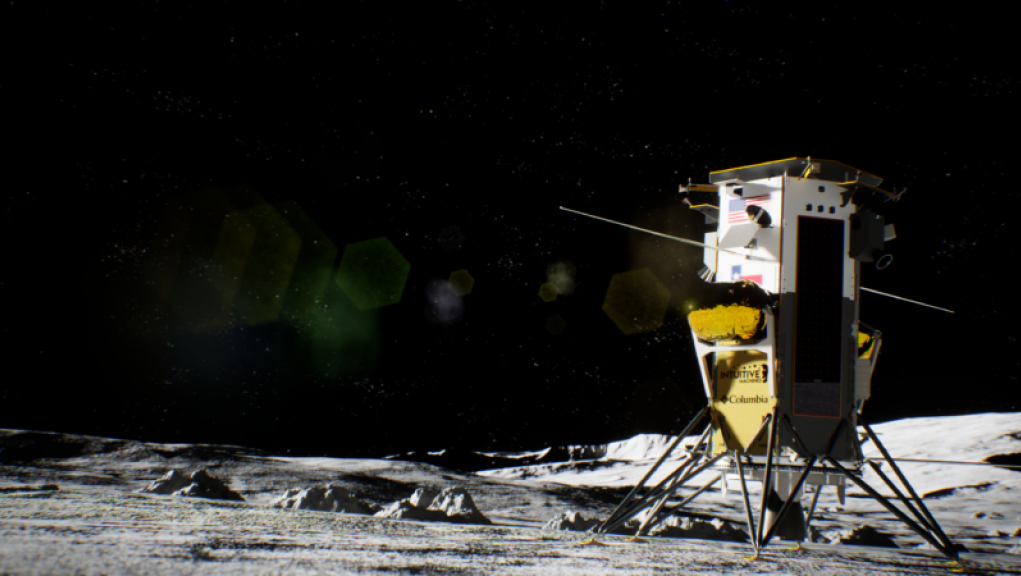A Houston-based company that is one of several US firms building private lunar landers, Intuitive Machines, is excited to announce that its 3-meter-tall Nova-C lander is finally ready to take to the skies.
“Our Nova-C lander is completely built,” said Steve Altemus, co-founder and chief executive of Intuitive Machines, in an earnings call on Monday. “We will deliver a lunar lander ready to go in September.”
Intuitive Machines is competing with other US companies, including Astrobotic and Firefly, for NASA-funded missions to deliver science experiments and other payloads to the surface of the Moon. Intuitive Machines and Astrobotic were formally awarded the first of these “Commercial Lunar Payload Services” contracts in May 2019. Each of the companies is running a couple of years behind schedule in producing their landers, however.
Astrobotic announced earlier this year that its Peregrine lander was completed and ready for its flight. However, the spacecraft has not yet been shipped from its factory in Pittsburgh to the launch site in Florida because United Launch Alliance has not completed testing of its new Vulcan rocket. That mission, according to sources, could launch as early as mid-December.
Intuitive Machines has been lagging a bit behind Astrobotic but now appears to have caught up. Because it has booked a ride on SpaceX’s Falcon 9 rocket, Intuitive Machines has the advantage of a vehicle that flies often and reliably—SpaceX has already launched more than 50 Falcon 9 rockets during this year.
The Astrobotic and Intuitive Machines missions are part of a flurry of activity expected on the lunar surface within the next several months.
Advertisement
The road to launch
During the earnings call, Altemus said Intuitive Machines will conduct about two weeks of flight software testing in Houston, followed by electromagnetic interference tests to ensure that spacecraft operations do not have an adverse effect on the vehicle’s five NASA payloads or those for commercial customers. Finally, there will be a center-of-gravity measurement before the Nova-C lander is shipped to the Florida launch site in one month.
Altemus said pre-launch processing at SpaceX’s facilities at Kennedy Space Center, including fueling the spacecraft and encapsulating it in the Falcon 9 rocket’s fairing, will take 35 days. This will be followed by a wet dress rehearsal and then the launch.
Currently, the Intuitive Machines-1 mission has a launch slot reserved from November 15 through November 20 on board a Falcon 9 lifting off from Launch Complex-39A at Kennedy Space Center. However, Altemus acknowledged that schedule changes are possible due to weather or if SpaceX has to launch higher-priority customers for the US military or NASA. If that’s the case, the company has a backup window in December.
This mission is slated to land near the South Pole of the Moon, and it would mark the first time any US-led mission attempted to land near this polar region where scientists believe there may be large deposits of ice.
A publicly traded company, Intuitive Machines reported $18 million in revenue during the second quarter of this year, with an operating loss of $13.2 million. The company has $39.1 million in cash and cash equivalents on hand. Altemus said the firm’s multiple lines of business—lunar landers, lunar data services, and in-space services—are all demonstrating growth. Intuitive Machines, he said, is already well along in building its second Nova-C spacecraft for another NASA mission in 2024.
Intuitive Machines is also among the bidders for a large NASA contract to provide a next-generation lunar rover for NASA as part of its Artemis Program to explore the Moon.
Today, Intuitive Machines (IM) proudly announces their readiness to launch a lunar mission this year. IM, a United States-based, privately-held aerospace company, is at the forefront of developing autonomous spacecraft for use in space exploration and discovery. The goal of this mission is to demonstrate the capabilities of robotics and automation for space exploration.
The lunar mission is scheduled for launch this summer. On board will be the Nova-C lunar lander, designed and produced by IM. The 300-kilogram robotic vehicle is equipped with high-resolution cameras, navigation systems, and communication devices. Additionally, IM is sending a separate rover named Prism. The rover is designed to collect and transmit data, such as surface imagery and soil samples, back to Earth for analysis.
This mission will be the first commercial flight to the moon, and one of only a handful of private efforts for deep space exploration. It marks a huge milestone in the history of space exploration, since it will be the first time a privately funded mission is attempting a controlled landing on the moon.
IM plans to use this mission to lay the groundwork for future exploration and colonization of space. By taking proactive steps towards creating feasibility studies for lunar settlements, they are paving the path for future space exploration.
IM’s mission readies humanity for a new era of exploration and discovery. It symbolizes a rekindled spirit of exploration, while pushing the boundaries of technology and deepening our understanding of the universe.
We, here at Intuitive Machines, would like to extend our sincere thanks and appreciation to all the members of the dedicated team, investors, and contractors who helped make this mission happen. We are proud to be leading the way for a whole new era of space exploration and thank you for supporting us on this journey.




















